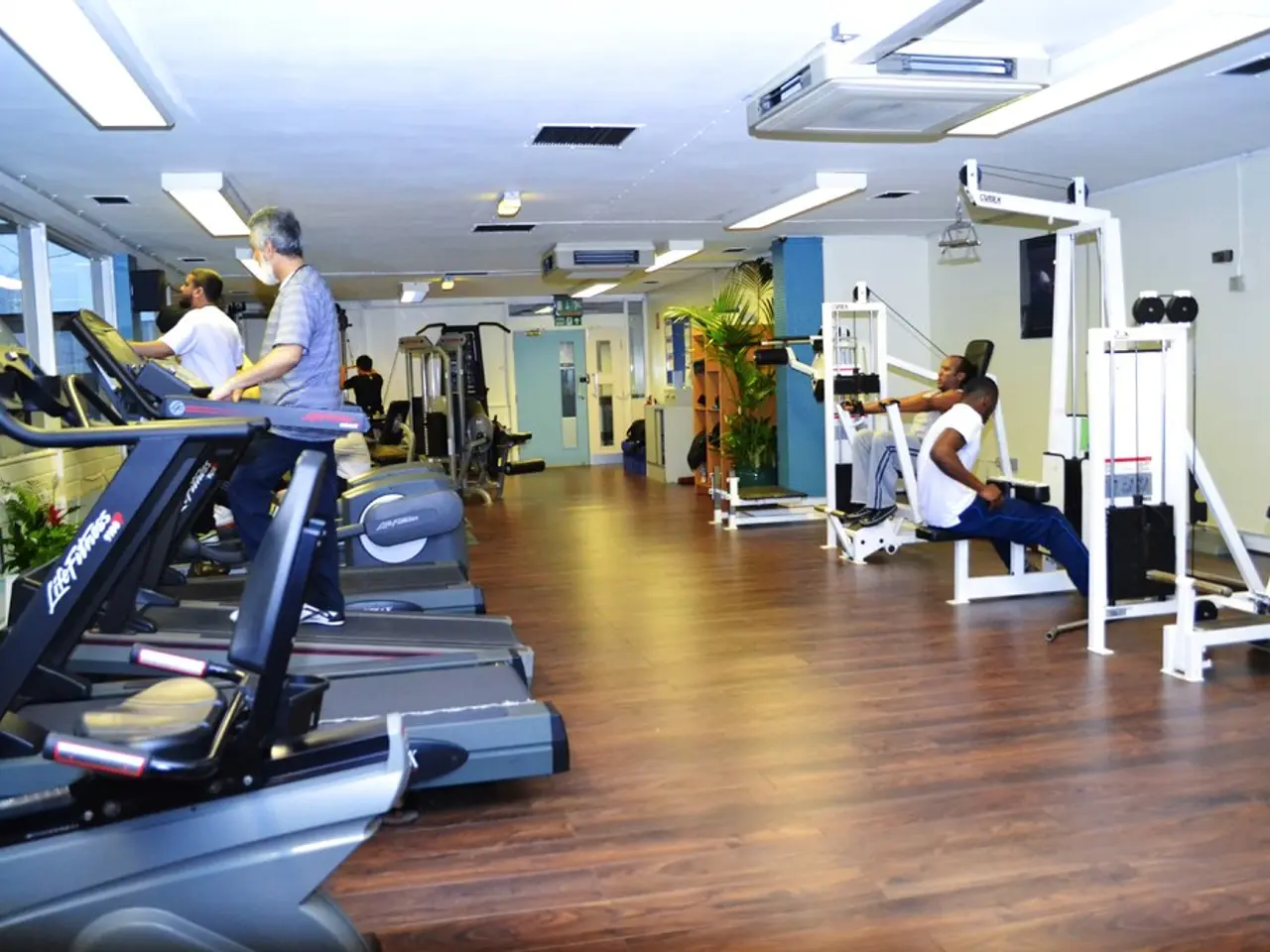Heart Valve Disease Treatment Options: Advantages, Disadvantages, and Recommended Exercises
For individuals living with heart valve disease, maintaining an active lifestyle can significantly improve heart function and alleviate symptoms. The American Heart Association recommends a mix of moderate-intensity aerobic exercise and some resistance training, amounting to about 150 minutes per week [1].
Commonly recommended exercises include cycling (stationary or outdoor), elliptical training, walking (including Nordic walking), ballroom dancing, and chair exercises with resistance bands. Resistance training should be done at least two nonconsecutive days weekly [1][3].
Walking, a simple and safe form of exercise, is particularly beneficial for those with heart valve disease. Tai chi, a slow and gentle exercise that promotes relaxation, balance, and flexibility, is another recommended option. Swimming, a full-body workout that is easy on the joints, can also improve cardiovascular fitness [2].
Yoga, focusing on gentle stretching, breathing exercises, and relaxation techniques, is another low-impact exercise that can benefit those with heart valve disease. Proper hydration is crucial during exercise to support cardiovascular function [2].
Safety is paramount when exercising with heart valve disease. It is essential to consult a healthcare professional before starting or modifying an exercise program. This ensures exercise is safe given your specific valve condition and overall health [1][4].
Some with moderate-to-severe valve disease may need to restrict exercise intensity, targeting heart rates below certain thresholds. Participation in a medically supervised cardiac rehabilitation program is highly recommended, as these programs tailor exercise intensity and type based on individual capacity, monitor heart function closely during sessions, and incorporate lifestyle management such as blood pressure and diabetes control [2].
Gradual progression in exercise intensity and duration is advised if symptoms or exercise capacity are limited, avoiding sudden or strenuous exertion. After valve interventions like transcatheter aortic valve replacement (TAVR), continuing heart-healthy habits including supervised exercise is essential, but starting such routines should always be approved by healthcare providers [4].
By following a safe and suitable exercise routine, individuals with heart valve disease can improve their heart health and enhance their quality of life. Regular exercise contributes to maintaining a moderate weight, which is important for heart health. However, it is crucial to pay close attention to your body during exercise and stop if you experience chest pain, severe shortness of breath, dizziness, or an irregular heartbeat [2].
In conclusion, patients with heart valve disease should engage in moderate, mostly low-impact cardiovascular and resistance exercises under medical guidance to safely improve heart function and symptoms, with individualized exercise prescriptions and ongoing monitoring. Exercise, when done correctly and with the right guidance, can be a powerful tool in managing heart valve disease.
[1] American Heart Association. (2020). Exercise and Physical Activity Recommendations for Older Adults. Retrieved from https://www.heart.org/en/healthy-living/fitness/physical-activity-recommendations-for-older-adults
[2] American Heart Association. (2021). Heart Valve Disease. Retrieved from https://www.heart.org/en/conditions/heart-valve-disease
[3] American Heart Association. (2020). Resistance Training. Retrieved from https://www.heart.org/en/healthy-living/fitness/strength-training
[4] American Heart Association. (2021). Transcatheter Aortic Valve Replacement (TAVR). Retrieved from https://www.heart.org/en/conditions/heart-valve-disease/treatment/transcatheter-aortic-valve-replacement-tavr
[5] American Heart Association. (2021). Aortic Stenosis. Retrieved from https://www.heart.org/en/conditions/heart-valve-disease/aortic-stenosis
Maintaining a fitness-and-exercise routine prescribed by medical professionals can help manage heart valve disease by enhancing cardiovascular-health. It's advisable to partake in activities such as walking, yoga, and swimming, which are low-impact exercises, while being mindful to consult healthcare providers before modifying or starting an exercise program [1][4]. Adequate nutrition, an essential part of health-and-wellness, plays a vital role in supporting overall heart health [2]. Incorporating elements like strength training and resistance bands, as recommended by the American Heart Association, can further improve medical-conditions such as heart valve disease [3]. Healthcare professionals can guide individuals with heart valve disease in creating a personalized exercise program that aligns with their specific valve condition and overall health. By combining regular exercise with proper nutrition, individuals will see improvements in their heart health, leading to an enhanced quality of life [1][2].




